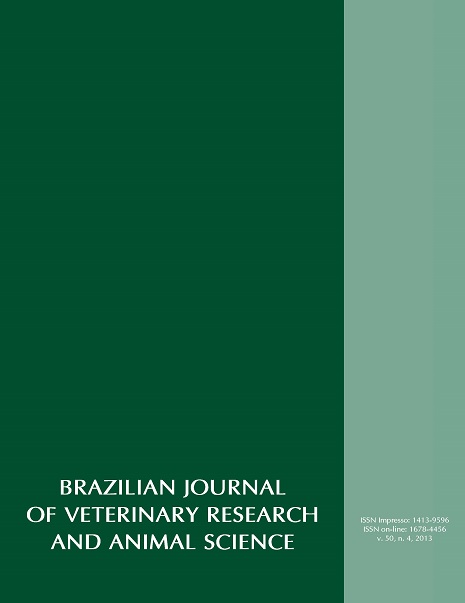Biometric development and performance of broilers submitted to different periods of post-hatching fasting
DOI:
https://doi.org/10.11606/issn.2318-3659.v50i4p300-306Keywords:
Biometrics, Fasting, Compensatory GrowthAbstract
The objective of this study was to evaluate the effects of fasting time on biometrics organ digestive tract and performance of broilers. A total of 640 sexed birds were, distributed according to a completely randomized design with four periods of fasting after hatching (0, 12, 24 and 36 hours) and four replicates of 40 birds each (20 females and 20 males). The evaluation of body weight and biometrics of the organs during the housing of the birds showed that there was loss of relative weight of the yolk sac and reduction in weight as they increased the time between birth and accommodation. Fasting influenced the relative weight of all of the digestive tract, except for esophagus + craw that remained unchanged. With the increasing fasting time there was an increase in relative weight of the proventriculus + gizzard, small intestine + pancreas, large intestine, liver + gallbladder. The live weight at 7 and 21 days of age was higher in birds that remained in restriction of 24 and 36 hours of fasting. However, the other performance variables were not affected by fasting compared with birds with no fasting. Therefore, the use of up to 36 hours post-hatching fasting affects the development biometric digestive tract, however the production performance of broiler at 42 days of age is not affected by food restriction.Downloads
Downloads
Published
2013-08-17
Issue
Section
UNDEFINIED
License
The journal content is authorized under the Creative Commons BY-NC-SA license (summary of the license: https://
How to Cite
1.
Carvalho LSS, Machado CA, Fagundes NS, Litz FH, Fernandes E de A. Biometric development and performance of broilers submitted to different periods of post-hatching fasting. Braz. J. Vet. Res. Anim. Sci. [Internet]. 2013 Aug. 17 [cited 2025 Apr. 3];50(4):300-6. Available from: https://revistas.usp.br/bjvras/article/view/74719





